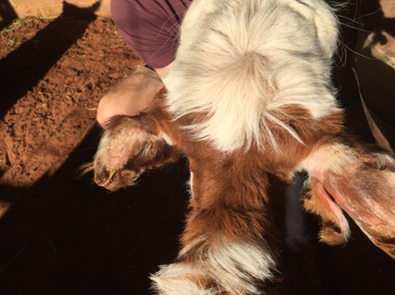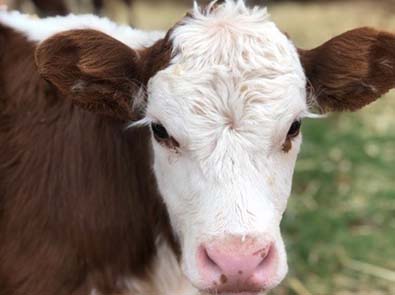Raising poddy calves: A pastoralist’s perspective
The following article provides a local pastoralist’s perspective on a familiar chore for cattle properties—raising ‘poddy calves’. Although this article has been adapted for the ASRR, this does not infer singular endorsement by the department for described products or practices.
By Paddy Weir, Allambi and Todd River Stations, NT
Definition: Poddy (noun)—an orphaned calf that is fed by hand
It is not unusual to become a surrogate parent to orphaned calves after they are mismothered during a dry season, after a calving in the yard, or after injury of the calf.
The following outlines our method of raising orphaned and injured calves, based on more than 20 years of practice.
We transport calves to the homestead calf pen as soon as possible. This usually involves a ride in a station vehicle.
To start (Day 0), we feed the calf only by bottle with electrolytes (mixed as instructed on the container) for the first two feeds. Every calf receives two litres of warm water with a measure of either powdered or liquid electrolytes. Our preference is the powdered form and we buy it in bulk (10 -15kg buckets) so we always have it on hand. A 10kg bucket of powdered electrolytes costs about $100 but will feed a number of calves and dramatically increase their survival rate.
Some calves feed straight away, and some need time. Some are fussy about the type of teat and others need to be assisted by massaging the teat to get the liquid into their mouth. After the initial two feeds of electrolytes, we start them on ‘calf milk replacer’ with gradual building up of the strength of the milk mixture to avoid potentially fatal scouring (diarrhoea). For example, most milk replacers require two heaped cups (total: 250 - 300g) of powder to two to three litres of warm water, fed once a day in the morning. We build up the amount of milk powder that is mixed daily into two litres of warm water, using the schedule below:
| Day | |||||||
|---|---|---|---|---|---|---|---|
1 | 2 | 3 | 4 | 5 | 6 | 7 | 8 |
¼ cup | ½ cup | ¾ cup | 1 cup | 1¼ cups | 1½ cups | 1¾ cups | 2 cups (heaped) |
Generally, we continue feeding electrolytes in the afternoons for extra sustenance until the calf is on full milk. If the calf is sickly, for example with dog bites, we may continue this evening feed of electrolytes for longer.
Once the calves are on full strength milk replacer, we usually switch from the bottle to a ‘calf-a-teria’ (mulit-teat feeder); if the calf is drinking well, this switch can happen earlier. We notice an increase in appetite for liquid once they have been feeding for three-four weeks, so we usually build up the daily volume to about four litres for each calf, while maintaining the amount of milk powder (two heaped cups).
The above feeding method has worked well for us.
Although colostrum powders are available to feed a calf that may not have had its first drink, these powders are very expensive and we have not noticed any advantage when using them for our calves.
Sometimes we find poddy calves with dog bites. These can be treated with injectable antibiotics and anti-inflammatories that are prescribed by a veterinarian. We have also discovered that flushing and cleaning the wound daily with warm salty water (a hand full of table salt in half a bucket of water) assists healing, along with a wound spray to help treat infection and fly strike.
From day one we offer calves hay in their feeder and a scoop on top of ‘calf starter meal’—a protein-rich grain mix which looks a bit like muesli and can be fed from birth until 12 weeks. The other feed we give them from about six weeks of age on is ‘beef weaner pellets’. Once they are consuming 1-1.5kg of pellets a day, they can be weaned off the ‘calf milk replacer’. The milk replacer instructions recommends abrupt weaning at six-seven weeks, but we will feed milk replacer up until approximately eight to twelve weeks of age or longer, depending on how well the calf is eating solids.
Fresh water must be available at all times.
We have also had calves that are knuckled over. We have found a suitably-padded poly pipe is an effective splint. Newborn calves can recover very successfully if treated with a splint.
Another common problem is blindness caused by pink eye infection. We have treated calves with veterinary-prescription eye ointment and purchased or homemade adhesive eye patches. We may also need to treat them with veterinary-prescription injectable antibiotics and anti-inflammatories.
The products mentioned in this article can be purchased from local livestock agents or veterinary suppliers.
Overall, we have found great success with these methods, and the experience of raising poddy calves has been very rewarding.


Image left: A calf with ripped ears from dog bites, Image right: Raising a healthy, happy poddy can be very rewarding.
Give feedback about this page.
Share this page:
URL copied!